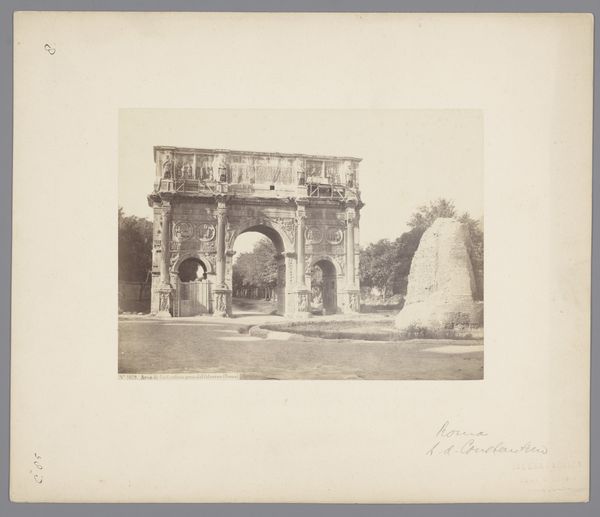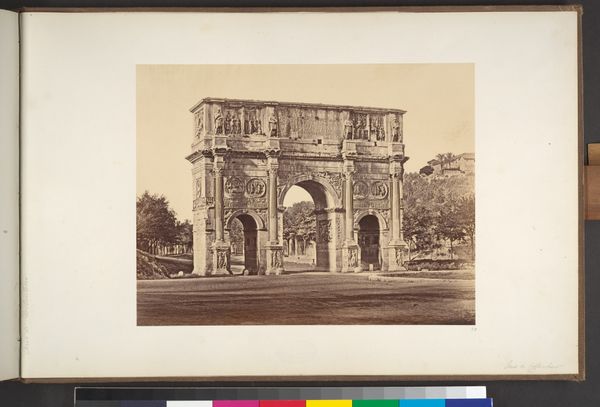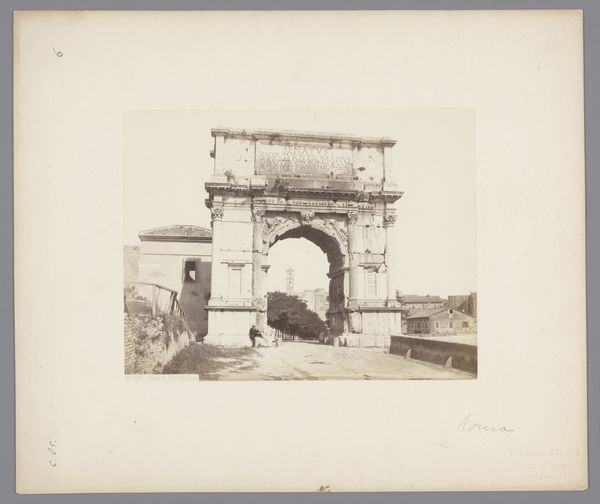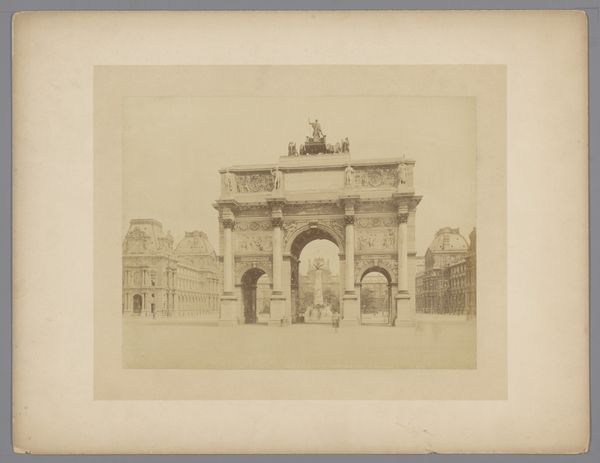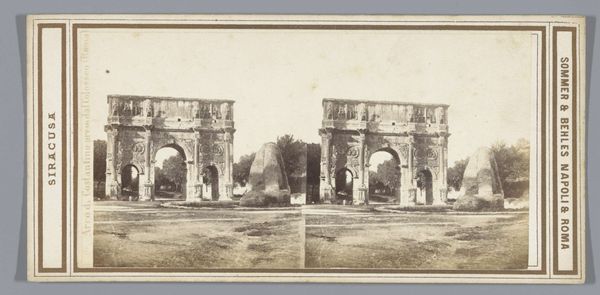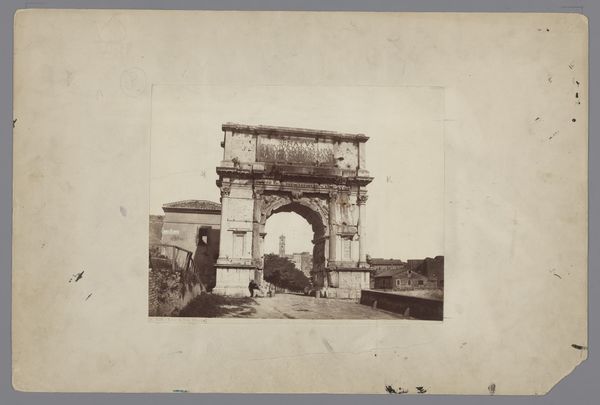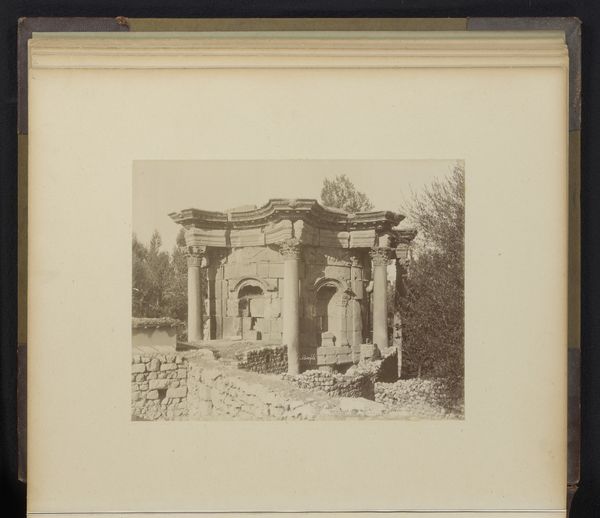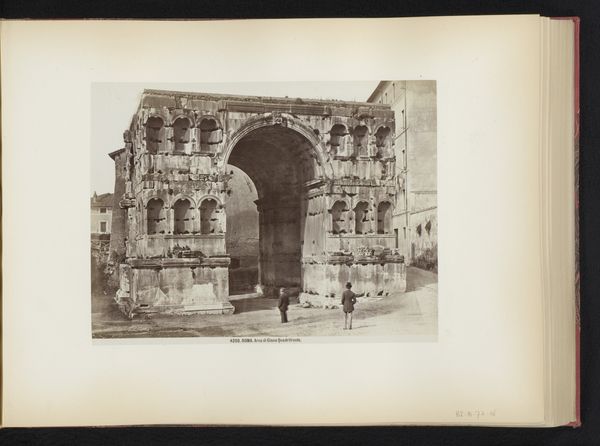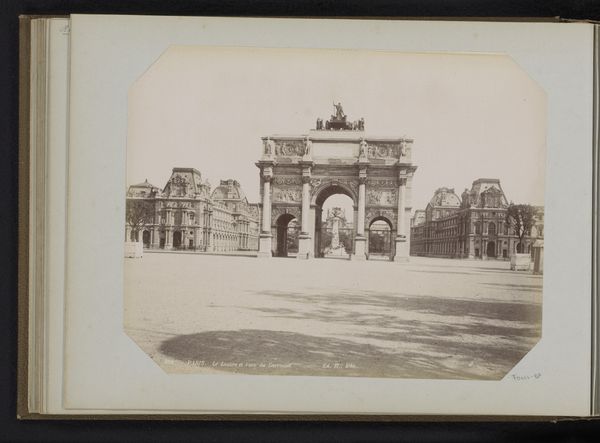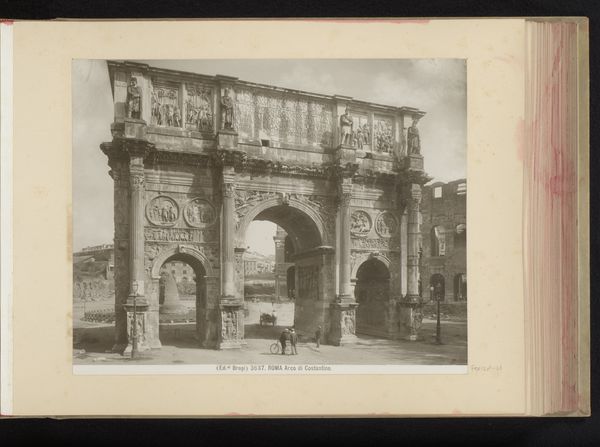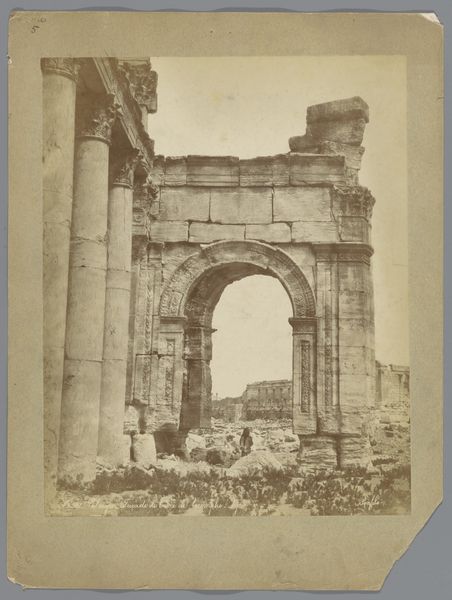
print, photography, gelatin-silver-print
# print
#
greek-and-roman-art
#
landscape
#
photography
#
geometric
#
ancient-mediterranean
#
gelatin-silver-print
#
cityscape
Dimensions: height 272 mm, width 367 mm, height 492 mm, width 639 mm
Copyright: Rijks Museum: Open Domain
Curator: This photograph by James Anderson, taken around 1859, captures the north side of the Arch of Constantine in Rome. It's a gelatin-silver print held here at the Rijksmuseum. Editor: The print has such a melancholic, sepia tone. It almost feels like a monument to time itself, the sheer weight of history bearing down. You can really feel the massive stone of that archway. Curator: Absolutely. Anderson's technique really highlights the material presence of the arch. Look at the way he uses light and shadow to accentuate the texture of the stone blocks and the intricate carvings. You can almost trace the marks of the laborers who built it, as well as see evidence of more recent restoration efforts, no doubt involving extensive labor and resources. Editor: Which then asks us to consider who *was* Constantine, and what message does this triumphant arch, erected to celebrate his victory, convey across centuries of shifting power dynamics? It speaks volumes about imperial ambition, military prowess, and the subjugation of conquered peoples. It’s inherently a political statement, wouldn't you agree? Curator: Undeniably. And Anderson's choice to capture it in a photograph raises questions about the medium itself. Photography was still relatively new at this time. How did its mechanical reproduction alter our relationship to these ancient structures, transforming them into portable, consumable images? The print is made by workers who also should be acknowledged. Editor: Exactly! It democratizes access to the monument while simultaneously detaching it from its original context. And look how the surrounding environment - the trees, the pathway - adds to that sense of time passing, nature reclaiming the built environment even as the structure attempts to stand tall. Is it also saying something about empire in decline? Curator: Perhaps, or perhaps the naturalization of the arch itself. But thinking materially, one has to ask: What silver was used in this process, and where was it mined? What kind of lens did Anderson use? All of these questions provide a deeper view into the world around the image and its production. Editor: It really makes you consider what we chose to memorialize and who benefits from these lasting tributes, doesn't it? Who gets remembered, and at whose expense? Curator: I find myself thinking about the sheer physicality of producing this image, how that interacts with a place as filled with historical material as Rome. Editor: Indeed. I’m stuck with how photography re-contextualizes and interrogates grand narratives of power.
Comments
No comments
Be the first to comment and join the conversation on the ultimate creative platform.
